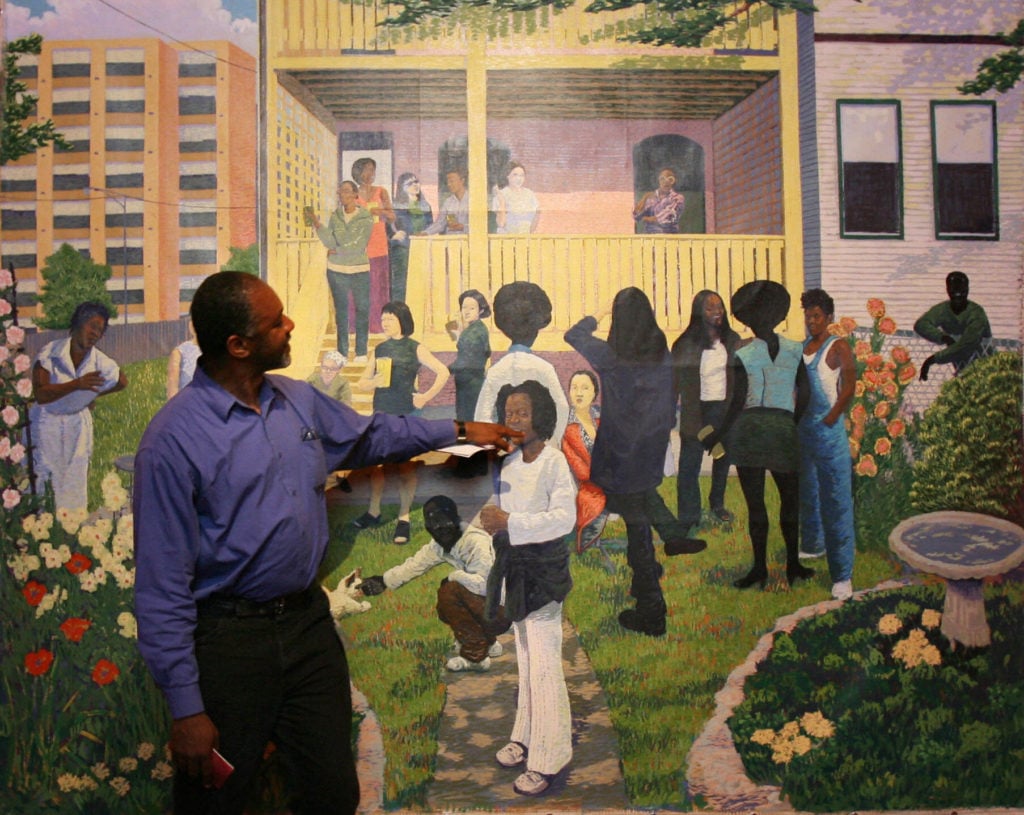Over the past week, cultural institutions around the world, including the Guggenheim, the Jewish Museum, and the San Francisco Museum of Modern Art, have been confronted with a series of open letters from current and former staff members calling for an end to institutional racism.
These issues are nothing new, and Black artists have long been vocal about the exclusion of their stories from the history of art. One such artist is Kerry James Marshall, whose tableaux of everyday life among Black Americans have been celebrated over the course of his three-decade-long career.
Back in 2008, Marshall spoke to Art21 about some of the problems in museums as part of the “Extended Play” series, describing the experience of entering an encyclopedic institution and learning the history of art from a singular, European perspective.

Kerry James Marshall, (2003–07) exhibited documenta 12. Photo: Barbara Sax/AFP/Getty Images.
First he is confronted with primitive and ancient collections, before continuing on to medieval European work, “and all that stuff is magnificent! It’s all good, you know, we all like it,” he says, smiling. But, “at some point you become acutely aware of your absence in the whole kind of historical timeline that develops this kind of narrative of mastery.”
For Marshall, the problem lies at the top, with white people almost uniformly leading the world’s most prestigious art institutions. “It is only an issue because there’s only this one set of institutions that everybody recognizes as being the best,” he tells Art21, “and you know that you’re not controlling them, so you got to keep asking the people who are controlling them to let you in.”
Extended Play,
Source: Exhibition - news.artnet.com



